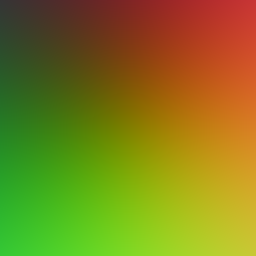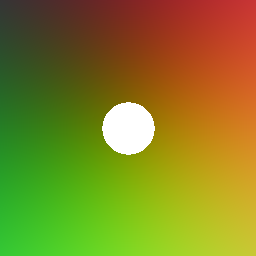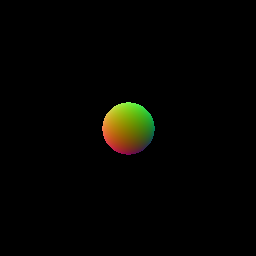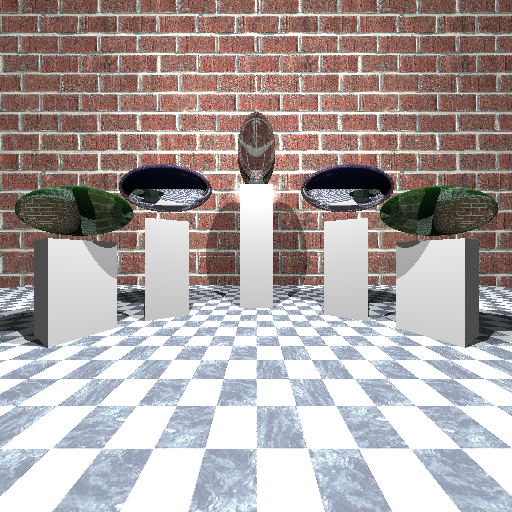Individual Effort:
No team participation is really encouraged in the case of the homeworks or the labs. If you need to use code you found online, you need to (1) check with us whether this is ok, (2) clearly mark it and (3) mention it in the readme file of your submission. If you fail to do one of these, it will be treated as academic misconduct.
Late Submission:
Don't get behind in the lab assignments - always start early!In this course you will have a total of 4 (four) grace days that you can distribute however you like. See here for more information on grace days.
Forum:
There is a forum at Moodle. (Note: Please make use of the forum. Help each other, but don't copy homework!)Objectives:
- To develop a ray tracer.
- To understand ray tracing and implement a ray tracer!
- To create some nice color images
In this lab you are writing a ray-tracer. After some basic features you will extend it to include some interesting effects. You should not use any OpenGL/WebGL and libraries (except for XML parsing and reading/writing PNG images) in this assignment. You can use any programming language you want, as long as your programm compiles and runs on almighty without installing additional environments (This should work at least with Java and C++).
Hint: We all love JavaScript, but writing a ray tracer with it is not the best decision. Unless you have a lot of time...
Submission Guidelines
We will use almighty server as a build environment. This means that your solutions of the Labs 2a and 2b must compile and run at least on almighty, which we will use in case we can't run or compile your solutions on our local machines during grading. Should your implementation, for any reason, fail to compile or run on almighty and our local machines, you will get zero points without further notice. You can transfer files from and to almighty using the scp command (or your OS equivalent) or alternatively clone your gitlab repo to almighty and compile your solution by ssh'ing to almighty and running g++ or javac (javac 11.0.7 and g++ 7.5 are installed - make sure your java or c++ version of choice is compatible). Most of you are probably already familiar with working on almighty from other courses, but if you have any issues, feel free to ask - we are there to help you.
Your project must build and run on almighty. You must not submit prebuilt binaries. Your project should compile and run on almighty without errors and without requiring extra configuration. Make sure to submit all the required files and to test it in time! A program that fails to compile will receive 0 points. No exceptions.
We encourage you to use either make to build your application. Make sure to keep your build system simple! It should only be a simple >>make (or similar) for us to build the project. We are not going to set up complex and weird build systems and spend 30 minutes to build your project.
If you have very good reasons to not use either make, make sure to document how to build your project. But it still should not be more than 1 or 2 simple commands!
Be sure to submit any comments or remarks in a 'readme.txt' file.
A word of Warning:
We will NOT (under any circumstances) accept submissions that do not compile and run on almighty. Please test your submission on almighty before you submit it. Check also that you included everything to compile your project. There will be absolutly no exception.
Tasks:
(100%) Required Tasks
- T1: (10%) Output a valid black image file (you will get many of them when continuing and this will be the only time you need them).
- T2: (10%) Be able to read in the xml file of the specification.
- T3: (25%) Output an image with spheres on it after ray tracing them.
- T4: (25%) Be able to read in geometry from the specified xml files. (example1.xml)
- T5: (30%) Implement basic Phong illumination and shading. (example2.xml)
(10%) Bonus Points
- B1: (10%) Render example3.xml with shadows.
Please state in the readme of your submission, which tasks or bonus points you have completed!
Hints and Tips:
You should feel free to design your program as you see fit, however, the following progression will make life easier for you:
- Create a valid image. If your programming environment does not support writing formats like PNG or JPEG you can also use the PPM format.
-
Create a default camera and rays.
Encode the ray direction as RGB and write it to an image to help debug your ray generation. The following image is an example of what the image should look like (r=x, g=y, b=z).

-
Create intersectable surfaces.
The following images show a reasonable progression. In the first image, white is a positive sphere intersection test. In the second image, the sphere is shaded based on the normal at the intersection point:


In general, some useful hints to observe:
- Use visual debugging by encoding data to RGB and outputting to an image.
- There are two tactics to perform transformations: Transform the rays or transform the objects. If you choose to transform the rays remember that you must use the inverse transformations!
- To transform the normal correctly, the transpose of the inverse transformation matrix must be used.
- Calculate the inverse transformation matrix as you receive the transformations.
-
Some useful sites to get you started:
Constructing eye rays
Intersection routines - While we are providing some very primitive shapes. I am encouraging you to create your own, more interesting shapes in a modeling program, such as the open source Blender.
Input Files:
Your raytracer should be able to read our xml based input file format:
Input file specification
The following input scenes will be used to grade your submission, so make sure that they are displayed correctly.
Download example scenes









Grading Criteria
Grading the labs will be based on the following:
- 80%: Correctness and adherence to assignment specification.
- 10%: Readability and structure of code, use of comments, indentation, etc.
- 5%: Efficiency and speed (only an issue if its very inefficient)
- 5%: Adherence to lab procedures (submitting, naming conventions, etc)
In order to get a full mark, you need to do all of the assigned tasks AND adhere to to lab procedures while creating readable and efficient code. I.e. if you accomplish only 70% of the tasks correctly, but you do not adhere to lab procedures, your final mark will be 70*(1-0.05) = 66.5%.
Submission
- Be sure to double check your final submission by unzipping it in another directory, best on a different computer
- Provide a 'readme.txt' file in which you describe the following:
- A 'claim'-section in which you provide an overview of which objectives you actually have implemented
- Provide additional remarks if you somehow implemented them only partially or if there are any noteworthy mistakes.
- Failing to do so will lead to a worse mark.
- A 'tested environments'-section, describing for instance the OS of dev-computer, OS of test-computer, browsers (+version) used for testing, ...
- A 'additional and general remarks'-section, containing additional noteworthy comments (if applicable).
- A 'claim'-section in which you provide an overview of which objectives you actually have implemented
- Include everything required by your program in your submission including: objects, textures, etc...
- Submit your files on Moodle.
Last modified: Jan 6, 2021 Willi Zhanxiang Ye / 01529229 AT unet DOT univie DOT ac DOT at